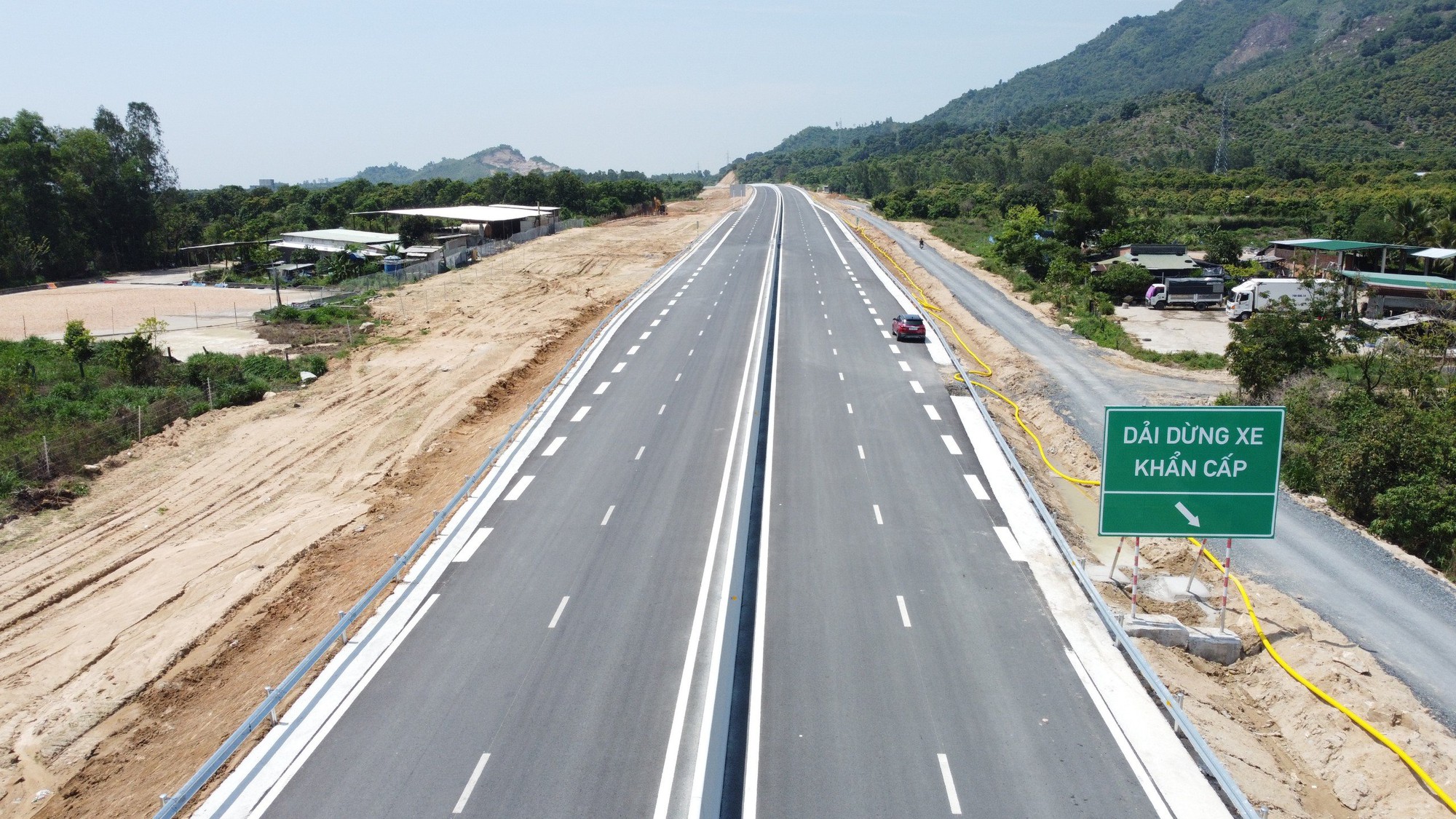On March 19, the Traffic Police Department – Ministry of Public Security held a scientific workshop on “Ensuring order and traffic safety on expressways – current situation and solutions”.
Flaws in planning and management
The workshop focused on solutions to enhance the effectiveness of patrolling, monitoring, handling violations, ensuring order and traffic safety on roads, preventing congestion and accidents. The workshop also discussed the current situation and surveyed the infrastructure and traffic organization on expressways.
At the workshop, Major General Nguyen Quang Nhat – Head of the Propaganda, Investigation and Settlement of Traffic Accidents Department (Traffic Police Department) – said that up to now, the country has exploited and used 9 expressways with a total length of 1,708 km. During their operation, these expressways have exposed flaws in planning, construction, management, and maintenance, affecting traffic safety on highways. Numerous accidents have occurred as a result.
Among them, there were particularly serious cases, such as 2 incidents on the Cam Lo – La Son and Noi Bai – Lao Cai expressways at the beginning of 2024. In addition, newly operated expressways such as Hanoi – Lao Cai, Cao Bo – Mai Son – National Highway 45, Trung Luong – My Thuan, Vinh Hao – Phan Thiet, and Nha Trang – Cam Lam have continuously experienced traffic accidents because the safety standards were not guaranteed from the construction phase.
Specifically, there were no rest stops for drivers, no rigid median barriers, no emergency stopping lanes, or they existed but did not meet the standard width requirements. Inadequate lighting systems and limited visibility were also issues. In addition, some highways lacked work offices, impound lots, and places for handling violations, which caused difficulties for traffic law enforcement operations.
In his presentation at the workshop, Lieutenant Colonel Le Quang Hoa – Head of the Traffic Control and Guidance Department (Traffic Police Department) – stated that after surveying all 11 expressways and the Cam Lo – La Son project, they discovered 132 inconsistencies and issues, such as the lack of median barriers, emergency stopping lanes, and deteriorating road surfaces.
For some newly operated and in-use highways that do not meet the high-speed standards, there are potential risks of accidents, congestion, and difficulties for drivers. Other expressways, such as Hanoi – Lao Cai and Hanoi – Thai Nguyen, have experienced degradation, rutting, and poor smoothness during their operation, posing risks to traffic safety. However, the repairs have been delayed and are slow to be implemented.

Narrow roads and the lack of emergency stopping lanes create unsafe traffic conditions on many highways. Photo by KY NAM
Downgrading for safety
According to Lieutenant Colonel Le Quang Hoa, if these highways do not meet the safety requirements, they will propose downgrading their operation. “If downgrading is not possible, we need to restrict vehicle access, control speed, and ensure the safety of all road users,” emphasized Lieutenant Colonel Le Quang Hoa.
Regarding the current situation, Deputy Director of the Road Management Department Nguyen Manh Thang believes that the allocated budget can only meet about 66% of the investment demand for expressways in the period of 2021 – 2025. “As the management unit, we always want to operate 6-lane highways with full standards, such as the Hanoi – Hai Phong expressway. However, due to limited resources, we have to stagger investments in some routes with low traffic volumes and difficult terrain,” said Mr. Thang.
Mr. Thang further explained that investing in 2-lane expressways without rigid median barriers poses a high risk of accidents, while continuous emergency stopping lanes create prolonged congestion when incidents occur. The Ministry of Transport will issue standards for expressways in the first quarter of 2024. When these standards are in place, 2-lane expressways will no longer exist, and the minimum requirement for new investments will be 4-lane expressways. Resources will be allocated to ensure the completion of building expressways.
Mr. Khuat Viet Hung, Deputy Chairman of the National Traffic Safety Committee, stated that although there are cases where accidents occur due to substandard road conditions, the main issue lies in the lack of knowledge, skills, and awareness of road users. “In the recent accidents on the Cam Lo – La Son expressway, the drivers were reckless, and they did not place warning signs when stopping their vehicles. With such a mindset, accidents can still happen on 6-lane expressways,” said Mr. Hung.
Regarding the installation of lighting systems on expressways, Mr. Nguyen Manh Thang believes that when driving on highways, road users follow signs and markings. Expressways do not have at-grade intersections or physical road obstructions, so installing lighting systems along the entire route would be a waste. “Regulations and standards specify the installation of lighting at toll stations, rest stops, interchanges, overpasses, tunnels, etc. As for straight sections, as long as there are road markings and signs, safety can be ensured,” analyzed Mr. Thang, referring to experiences from other countries where excessive lighting causes light pollution.
276 accidents resulting in 91 fatalities
According to statistics from the Traffic Police Department, from 2023 to the first two months of 2024, there were 267 accidents on expressways, resulting in 91 fatalities and 172 injuries. Compared to the previous period, there were 2 more accidents (0.75% increase), 30 more fatalities (32.97% increase), and 56 more injuries (32.56% increase).












